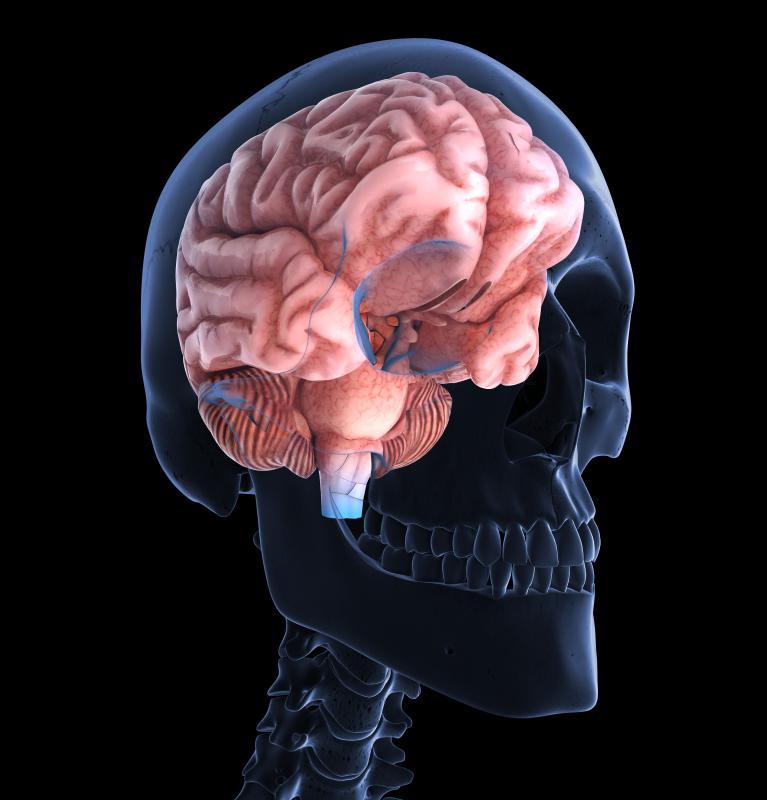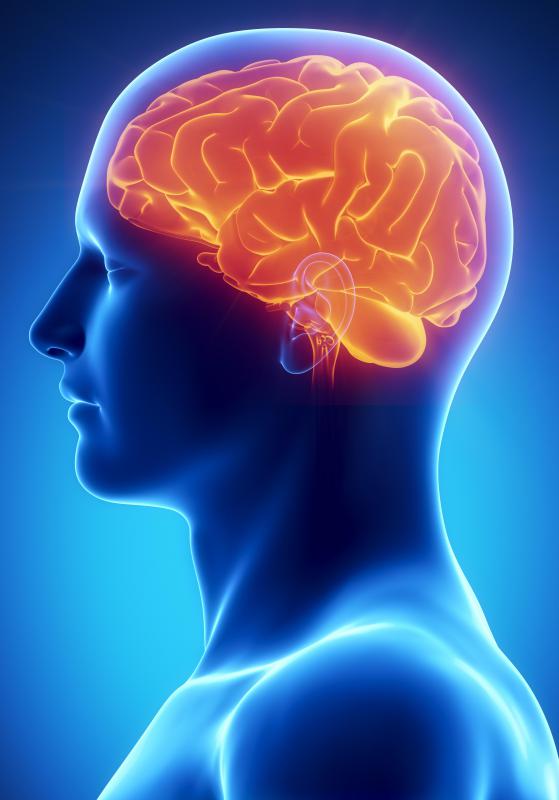At WiseGEEK, we're committed to delivering accurate, trustworthy information. Our expert-authored content is rigorously fact-checked and sourced from credible authorities. Discover how we uphold the highest standards in providing you with reliable knowledge.
What Is the Function of the Basal Ganglia?
The basal ganglia, or basal nuclei, are structures in the brain which help control movement. Smooth motor control, where motion begins, progresses and ends as expected, is partly coordinated by the basal ganglia. The function of the basal ganglia may be disrupted by certain illnesses, leading to difficulties with speech as well as movement. In Parkinson's disease, cells in the basal ganglia die off, leading to symptoms of slow movement, shaking and locked muscles. Conditions such as head injuries, brain tumors, strokes and drugs can also damage brain cells and affect the function of the basal ganglia.
A number of different anatomical structures in the brain are included in the basal ganglia. The names of these parts are the substantia nigra, globus pallidus, subthalamic nucleus, putamen and caudate. While the function of the basal ganglia is not fully understood, they are thought to be involved in initiating motion and in carrying out learned sequences of movements. It is possible that the basal ganglia could suppress other programs of action while allowing one desired program to be performed. This would prevent the brain from trying to carry out several conflicting movements at the same time.

The function of the basal ganglia involves sending nerve signals along two different pathways, one of which is direct and the other indirect. These signals are transmitted to part of the forebrain known as the thalamus, which relays them to the cerebral cortex, the gray matter of the brain. It is thought that the indirect pathway suppresses any conflicting actions while the direct pathway allows a specific task to be carried out. For normal movement, the pathways need to work correctly together and anything which disrupts the balance between them can cause a movement disorder, such as Parkinson's disease.

In Parkinson's disease, cells inside the substantia nigra die off, and other areas of the basal ganglia are affected as the condition progresses. The cell loss in the substantia nigra upsets the balance of the nerve pathways, making the indirect path more active and the direct path less active. Overall, the effect is to decrease movement and this leads to a shuffling gait which is accompanied by balance problems, rigid muscles, and trembling when at rest. Although the disease cannot be cured, treatments are available which can slow progression and help relieve symptoms. Drugs may be taken which provide substances such as dopamine, a neurotransmitter which is normally produced by cells in the substantia nigra and which carries signals from one nerve cell to the next.
AS FEATURED ON:
AS FEATURED ON:













Discuss this Article
Post your comments